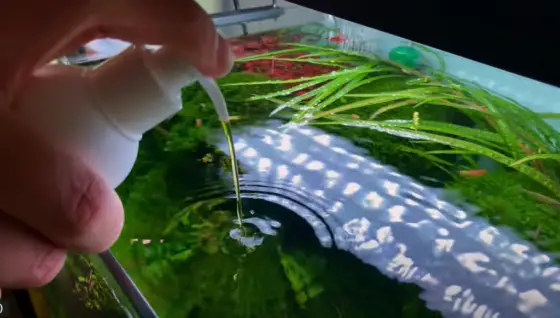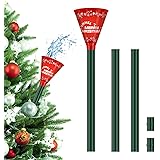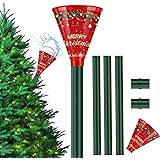Are you wondering how often to fertilize your aquarium plants? Well, worry no more! In this article, we will delve into the importance of fertilizing aquarium plants and provide you with a simple and effective solution. Maintaining the health and vibrancy of your aquatic plants requires a well-balanced fertilization routine.
By understanding the needs of your underwater garden, you can ensure optimal growth and a thriving aquatic ecosystem. So, let’s explore the world of aquarium plant fertilization and unlock the secrets to success!
How Often to Fertilize Aquarium Plants
Aquarium plants provide numerous benefits to a fish tank, such as improving water quality, oxygenating the water, and adding aesthetic beauty. However, to thrive and grow healthily, these plants require essential nutrients that may not be available in sufficient quantities in the aquarium alone. This is where fertilization comes into play.
In this comprehensive guide, we will explore the topic of how often to fertilize aquarium plants, providing you with all the necessary information to keep your aquatic plants thriving.
Understanding the Nutritional Needs of Aquarium Plants
Before diving into the specifics of fertilization frequency, it’s important to understand the nutritional needs of aquarium plants. Like any other plants, aquarium plants require macronutrients, micronutrients, carbon, and light to survive and thrive.
Macronutrients are essential elements needed in large quantities, including nitrogen (N), phosphorus (P), and potassium (K). Micronutrients, on the other hand, are required in smaller quantities and include elements like iron (Fe), manganese (Mn), and zinc (Zn).
In addition to nutrients, carbon dioxide (CO2) and light play crucial roles in photosynthesis, which is the process through which plants convert light energy into chemical energy. It’s important to strike a balance between these factors to ensure optimal plant growth and prevent nutrient deficiencies or algae overgrowth.
Read More: About How To Repot Peace Lily: Simple Steps
Determining the Fertilization Schedule
The fertilization schedule for aquarium plants depends on a variety of factors, including the plant species, tank size, lighting intensity, and the presence of CO2 injection. While some plants may require more frequent fertilization, others may thrive with less frequent dosing.
Here’s a breakdown of various factors that can influence the fertilization schedule:
Plant Species
Different plant species have varying nutritional requirements. Stem plants, such as Hygrophila and Rotala, are typically fast-growing and nutrient-demanding, requiring more frequent fertilization.
On the other hand, slow-growing plants like Anubias and Java Fern may require less frequent fertilization. It’s crucial to research the specific needs of the plants in your aquarium to determine an appropriate fertilization schedule.
Tank Size
The size of your aquarium also plays a role in determining the fertilization frequency. Larger tanks generally have more water volume and a higher nutrient load, which can sustain plants for longer periods.
Smaller tanks, on the other hand, may require more frequent fertilization as nutrients can deplete more quickly. It’s important to strike a balance and closely monitor nutrient levels in your tank to adjust the fertilization schedule accordingly.
Lighting Intensity
Lighting intensity influences the rate of photosynthesis, which in turn affects the plants’ nutrient requirements. Higher light intensities generally result in faster growth rates, requiring more frequent fertilization to meet the plants’ increased nutritional needs.
Lower light intensity setups may not require as much fertilizer, as the plants’ growth rate is slower.
CO2 Injection
The presence of carbon dioxide injection in your aquarium setup can dramatically impact plant growth and fertilization requirements. CO2 supplementation enhances photosynthesis, leading to more efficient nutrient uptake.
If you have a CO2 injection system in place, your plants are likely to have higher nutrient demands and may require more frequent fertilization. However, if you do not inject CO2 into your tank, you may need to adjust your fertilization schedule accordingly to avoid nutrient imbalances.
Types of Aquarium Plant Fertilizers
When it comes to fertilizing aquarium plants, you have several options to choose from. Understanding the different types of fertilizers will help you select the most suitable one for your tank. Here are the three main categories of aquarium plant fertilizers:
Liquid Fertilizers
Liquid fertilizers are commonly used in planted aquariums due to their convenience and versatility. These fertilizers typically come in bottles and are easy to dose directly into the aquarium water. Liquid fertilizers contain a combination of essential macronutrients and micronutrients, making them suitable for various plant species.
They are readily absorbed by the plant roots and provide quick nutrient availability. Liquid fertilizers are available in different formulations designed for specific purposes, such as promoting leaf growth or enhancing coloration.
Root Tabs
Root tabs are solid fertilizer tablets that are inserted into the substrate near the plant roots. These tabs slowly release nutrients over time, providing a long-lasting source of nourishment.
Root tabs are particularly beneficial for heavy root feeders, such as Amazon swords and crypts. They are easy to use and prevent nutrients from immediately dispersing throughout the water column.
Substrate-Based Fertilizers
Substrate-based fertilizers are specifically designed to provide nutrients to the plants through the substrate. These fertilizers are often in powder or granular form and are added to the substrate during tank setup or when replanting.
They slowly release nutrients into the root zone, ensuring the plants have a constant supply of essential elements. Substrate-based fertilizers are advantageous for heavily planted tanks or aquariums with nutrient-hungry plant species.
Dosing Techniques and Fertilization Frequency
Once you have chosen the appropriate fertilizer for your aquarium plants, it’s essential to understand the dosing techniques and frequency. Proper dosing ensures the plants receive the necessary nutrients without causing imbalances or harm to other tank inhabitants.
Here are the commonly used dosing techniques and guidelines for fertilization frequency:
Estimative Index (EI) Method
The Estimative Index (EI) method is a popular dosing technique used by many planted tank enthusiasts. This method involves dosing larger amounts of fertilizers to ensure the plants have an abundant supply of nutrients, allowing them to grow optimally. The excess nutrients are then removed through regular water changes to prevent imbalances or algae overgrowth.
The frequency of dosing in the EI method typically follows a three-day cycle:
- Day 1: Dose macronutrients (NPK) and trace elements
- Day 2: No dosing
- Day 3: Perform a 50% water change to remove any excess nutrients
It’s important to note that the exact dosages and frequency may vary depending on the specific fertilizers used and the needs of your aquarium plants. Regular water testing will help you fine-tune the dosing schedule for optimal plant growth.
Low-Tech/Non-CO2 Method
For aquariums without CO2 injection or lower light setups, a low-tech or non-CO2 method may be more suitable. In this method, the goal is to strike a balance between light intensity, nutrient availability, and plant growth. Fertilization dosing is typically less frequent to prevent nutrient buildup and algae issues.
A common fertilization routine for a low-tech setup includes:
- Weekly or bi-weekly dosing of a complete liquid fertilizer, providing both macro- and micronutrients
- Monitor plant growth and adjust dosing based on plant health and nutrient deficiencies
- Perform regular water changes to remove any accumulated nutrients
Monitoring and Adjusting Fertilization
Regular monitoring of your aquarium’s nutrient levels, plant health, and overall water parameters is crucial for successful fertilization. Keeping a close eye on the following factors will help you identify any imbalances, deficiencies, or excesses:
Nutrient Deficiencies
Nutrient deficiencies in aquarium plants can manifest in various ways, including yellowing or discolored leaves, stunted growth, or poor overall plant health. If you notice any signs of nutrient deficiencies, it’s important to identify the specific nutrient lacking and adjust your fertilization routine accordingly. For example, yellowing leaves may indicate an iron deficiency, while slow growth could be a sign of nitrogen deficiency.
Algae Growth
Algae overgrowth is often a result of nutrient imbalances or excessive fertilization. If you notice excessive algae growth in your aquarium, it may be necessary to reduce the fertilization frequency or adjust the dosing amount. Balancing nutrient levels and maintaining a healthy plant growth rate will help prevent algae issues.
Water Parameters
Regularly testing your aquarium’s water parameters, including pH, ammonia, nitrite, nitrate, and phosphate levels, will provide valuable insight into the overall health of your tank. High nutrient levels can indicate excessive fertilization or poor nutrient uptake by the plants. Adjusting the fertilization schedule based on water parameter results will help maintain a balanced and thriving aquatic environment.
Tailoring Fertilization to Your Aquarium
Every aquarium is unique, and finding the ideal fertilization schedule for your specific setup may require some experimentation. Factors such as plant species, tank size, lighting intensity, and CO2 injection will influence the nutrient demands of your aquatic plants. By closely monitoring your plants and water parameters, you can adjust the fertilization frequency and dosage to ensure optimal growth and overall tank health.
Remember to start with conservative dosing and gradually increase as needed while closely observing the plant’s response. With time and patience, you will find the right balance and achieve a flourishing planted aquarium.
In conclusion, how often to fertilize aquarium plants depends on various factors such as plant species, tank size, lighting intensity, and CO2 injection. It’s essential to understand the nutritional needs of your plants and select the appropriate fertilizers.
Regular monitoring and adjustment of the fertilization schedule based on plant health and water parameters will help maintain a thriving planted aquarium. Experimentation and observation are key to finding the perfect balance for your unique setup.
Read More: About The Difference: Aquaponics Vs. Polyaquaculture
Frequently Asked Questions (FAQs)
For most aquarium plants, it is recommended to fertilize once every two weeks. However, the frequency may vary depending on the specific needs of your plants and the type of fertilizers you are using.
Several factors need to be considered, including the type of plants you have, their growth rate, lighting conditions, nutrient levels in the water, and the type of fertilizer being used. Regular observation and adjustment may be necessary to find the optimal fertilization schedule for your aquarium plants.
Signs of nutrient deficiency in aquarium plants include stunted growth, yellowing or decaying leaves, and reduced vibrancy. Regularly monitoring the health and growth of your plants will help you identify when fertilization is needed.
Both liquid and solid fertilizers can be used for aquarium plants. Liquid fertilizers are usually easier to dose and are quickly absorbed by the plants, while solid fertilizers provide a slow-release nutrient supply. The choice depends on personal preference and the specific requirements of your plants.
Yes, it is possible to overdose your aquarium plants with fertilizers. Overdosing can lead to algae blooms, imbalanced nutrient levels, and can be harmful to your aquatic inhabitants. It is important to follow the recommended dosage instructions provided by the manufacturer and observe your plants’ response to fertilization.
Signs of over-fertilization include excessive algae growth, cloudy water, foul odor, and stressed or dying plants. If you notice any of these signs, it is recommended to reduce or temporarily stop fertilization until the imbalance is corrected.
Yes, under-fertilizing can lead to nutrient deficiencies in your aquarium plants, resulting in poor growth and overall health. It is important to provide an adequate supply of essential nutrients to support plant growth and prevent deficiencies.
Aquarium plants require macronutrients such as nitrogen (N), phosphorus (P), and potassium (K), as well as micronutrients such as iron (Fe), manganese (Mn), and zinc (Zn). These nutrients are essential for various physiological processes and should be provided in balanced amounts for optimal plant growth.
Final Thoughts
To ensure the health and vibrant growth of your aquarium plants, it is crucial to fertilize them regularly. The frequency of fertilization depends on various factors such as the type of plants, the size of your aquarium, and the presence of fish or other animals. Generally, it is recommended to fertilize aquarium plants every two weeks using a high-quality liquid fertilizer specifically formulated for aquatic plants.
However, it is essential to monitor the plants’ growth and health closely and adjust the fertilization schedule accordingly. Regularly testing the water parameters can also help determine any nutrient deficiencies and guide the fertilization frequency. By fertilizing aquarium plants appropriately, you can maintain a thriving and visually appealing underwater ecosystem.
Auto Amazon Links: No products found.
Perfect Plants Christmas Tree Saver 8oz. | Easy Use Xmas Tree Preserver Food | Have Healthy Green Christmas Trees All Holiday Season
$9.97 (as of December 5, 2025 00:43 GMT +00:00 - More info- Product prices and availability are accurate as of the date/time indicated and are subject to change. Any price and availability information displayed on [relevant Amazon Site(s), as applicable] at the time of purchase will apply to the purchase of this product.
Kaiedos Christmas Tree Watering Funnel - 39 Inch Funnel, Reusable Design, Makes Watering Your Live Tree a Snap!
$14.99 (as of December 5, 2025 00:43 GMT +00:00 - More info- Product prices and availability are accurate as of the date/time indicated and are subject to change. Any price and availability information displayed on [relevant Amazon Site(s), as applicable] at the time of purchase will apply to the purchase of this product.
Wilt-Pruf® Christmas Tree/Cutting Preserver Spray |Preserves Christmas Trees, Wreaths, Garlands, Cuttings and Carved Pumpkins | Reduces Needle Drop | Keeps Cut Trees Fresh Longer | Natural (32 oz)
$21.99 (as of December 5, 2025 00:43 GMT +00:00 - More info- Product prices and availability are accurate as of the date/time indicated and are subject to change. Any price and availability information displayed on [relevant Amazon Site(s), as applicable] at the time of purchase will apply to the purchase of this product.
Forest Fresh Christmas Tree Preservative Tablets – Tree Water Additive for Live Fresh-Cut Trees – Keeps Trees Hydrated and Reduces Needle Drop – Non-Toxic, Made in USA – 1 Packet (8 Tablets)
$5.99 (as of December 5, 2025 00:43 GMT +00:00 - More info- Product prices and availability are accurate as of the date/time indicated and are subject to change. Any price and availability information displayed on [relevant Amazon Site(s), as applicable] at the time of purchase will apply to the purchase of this product.
IPOOLTENG Christmas Tree Watering Funnel 3 Tube 1 Funnels 40 Inch - 3 Section Plastic Christmas Tree Funnel Waterer, Long Funnels for Watering Trees, Best Gifts for Your Parents to Water Tree
$14.53 (as of December 5, 2025 00:43 GMT +00:00 - More info- Product prices and availability are accurate as of the date/time indicated and are subject to change. Any price and availability information displayed on [relevant Amazon Site(s), as applicable] at the time of purchase will apply to the purchase of this product.
Cuisinart 6.5" Cast Iron Smashed Burger Press, Round Flat Edge Grill Press for Crispy Smash Burgers, Burger Tool for Grill and Griddle Accessories, for BBQs and Tailgates
$24.99 (as of December 4, 2025 16:51 GMT +00:00 - More info- Product prices and availability are accurate as of the date/time indicated and are subject to change. Any price and availability information displayed on [relevant Amazon Site(s), as applicable] at the time of purchase will apply to the purchase of this product.
Snow Joe Premium Enviro Blend Ice Melt, Green-Coated Deicer Crystals, 50 lb - Safer Melter for Vegetation, Concrete & Metals w/ Anti-Corrosion Calcium Magnesium Acetate
$32.97 (as of December 4, 2025 16:51 GMT +00:00 - More info- Product prices and availability are accurate as of the date/time indicated and are subject to change. Any price and availability information displayed on [relevant Amazon Site(s), as applicable] at the time of purchase will apply to the purchase of this product.
Muddy Mat® Shown on TV Super Absorbent Microfiber Dog Door Mat for Muddy Paws, Non-Slip Washable Pet Rug, Quick Dry Chenille Entryway Carpet, Machine Washable Indoor Outdoor mat, Grey 30"x19"
$19.95 (as of December 4, 2025 16:51 GMT +00:00 - More info- Product prices and availability are accurate as of the date/time indicated and are subject to change. Any price and availability information displayed on [relevant Amazon Site(s), as applicable] at the time of purchase will apply to the purchase of this product.
OLANLY Dog Door Mat for Muddy Paws 30x20, Absorbs Moisture and Dirt, Absorbent Non-Slip Washable Doormat, Quick Dry Chenille Mud Mat for Dogs, Entry Indoor Entryway Carpet for Inside Floor, Grey
$9.99 (as of December 4, 2025 16:51 GMT +00:00 - More info- Product prices and availability are accurate as of the date/time indicated and are subject to change. Any price and availability information displayed on [relevant Amazon Site(s), as applicable] at the time of purchase will apply to the purchase of this product.
Zevo Flying Insect Trap Official Refill Cartridges - Fits Both Zevo Trap & MAX Indoor Fly Trap - Authentic Trap+Lock Technology to Catch Gnats, House & Fruit Flys (4 Official Refill Cartridges)
$14.97 (as of December 4, 2025 16:51 GMT +00:00 - More info- Product prices and availability are accurate as of the date/time indicated and are subject to change. Any price and availability information displayed on [relevant Amazon Site(s), as applicable] at the time of purchase will apply to the purchase of this product.











